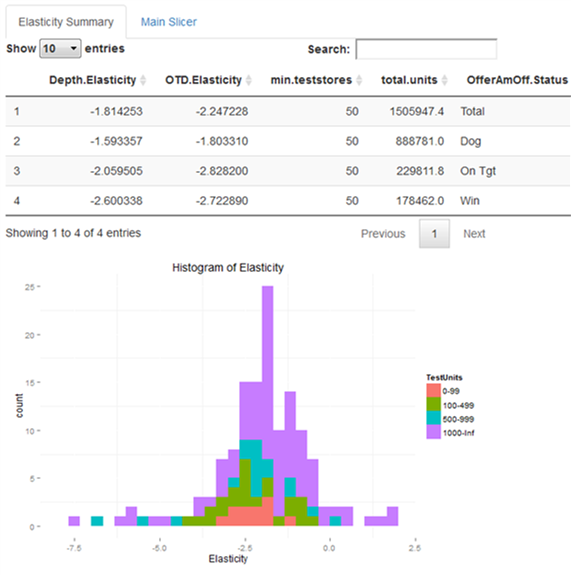Summary
Mosaic built a custom pricing system powered by artificial intelligence that recommends prices for 150M SKUs.

Take Our Content to Go
Price Elasticity of Demand | Exploratory Data Analysis
The client is one of the largest North American brick and mortar integrated retailers. They focus on seamlessly connecting the digital and physical shopping experience to serve their customers – wherever, whenever and however they want to shop.
The company understood that to stay competitive in today’s retail landscape they needed to offer a more personalized customer experience. As more and more retailers turn to data analysis, consumers expect more tailored offers and pricing.
The retailer manages over 150 million stock keeping units (SKU), and knew it needed to take a data-driven approach for pricing and promotional decisions. The retailer made some internal hires and began building out a data science team focused on optimizing pricing decisions. But with 150 million SKU’s, the company could not handle all of the business requests, so they turned towards Mosaic and our Rent a Data Scientist (RaDS) program for analytics consulting. They needed a data science consultant with specific expertise in predictive analysis and machine learning.
The retailer identified two key pricing optimization opportunities where they needed help. They needed to be able to price their seasonal apparel items in order to gain as much revenue as possible before the season is over, and they wanted to optimize the price of basic goods in their promotional catalogue. The internal data science team had already been selecting models and implementing in R, but these solutions needed to scale into more generalizable approaches so the pricing team could make quick, data-driven decisions on what a particular SKU should cost.
The flexibility of Mosaic’s RaDS model allowed the client to modify Mosaic’s tasking over the course of the engagement. It was critical for Mosaic to use predictive analysis in determining the price elasticity and seasonality of demand, forecasting future sales, and developing tools critical to optimizing prices.
Price Elasticity Model Selection
Some critical questions the team needed to answer immediately: How elastic is demand? What seasonality patterns drive demand for each type of item? Other variables such as weather, in-store vs online behavior, demographics, and geospatial information also needed to be modeled.
Mosaic’s team developed nonlinear regression techniques to answer these questions and to provide confidence intervals for future sales from longitudinal and cross-sectional data. The team also set up test-control store experiment designs based on demographic, climatographic, and competitive data around each store.
The primary analytics services provided were:
- Longitudinal seasonality estimation, demand prediction, and pricing review
- “Slicer” review tool for analyzing demand elasticity from an experiment that varied prices by store clusters
- Development of control store selection methodology
- Development of breakage model based on inventory levels
- Development of R Shiny-based dashboard and preparation of R scripts for interactive web-based visualization of predicted pricing impacts
Pricing Results
Mosaic modeled product-level price elasticity more robustly than the customer had previously been able to do. The team built a predictive model to help them predict weekly sales of seasonal products by balancing the influence of past and current years’ data.
Mosaic’s data scientists built a prototype web-based tool that leverages these models in order to automate pricing analyses and recommend discount levels that are most likely to achieve the customer’s sell-through and revenue objectives.
This tool can enable the customer to streamline their pricing process, making better weekly pricing decisions across their seasonal product catalog with less overall effort.

Contact us here to learn how you more optimally price your goods!


